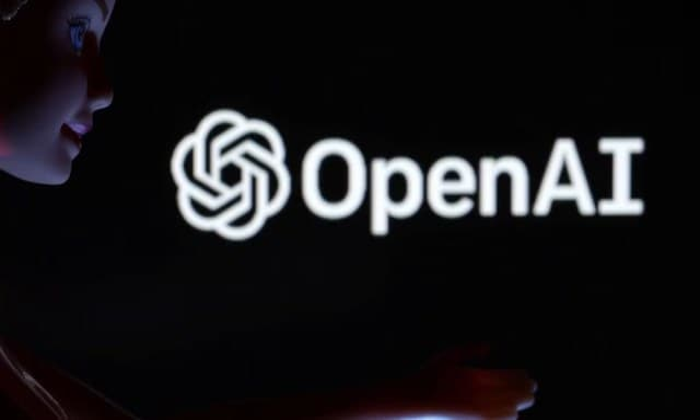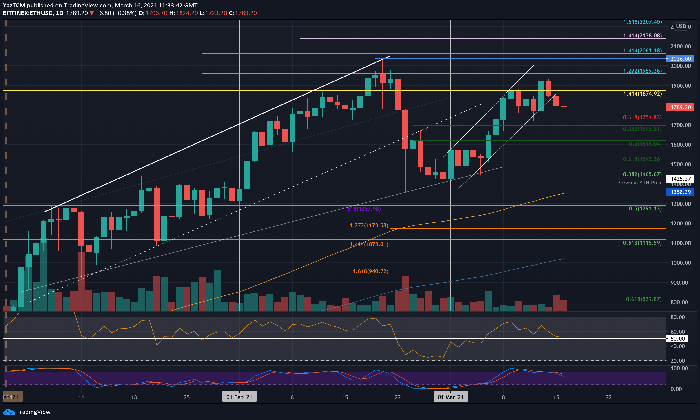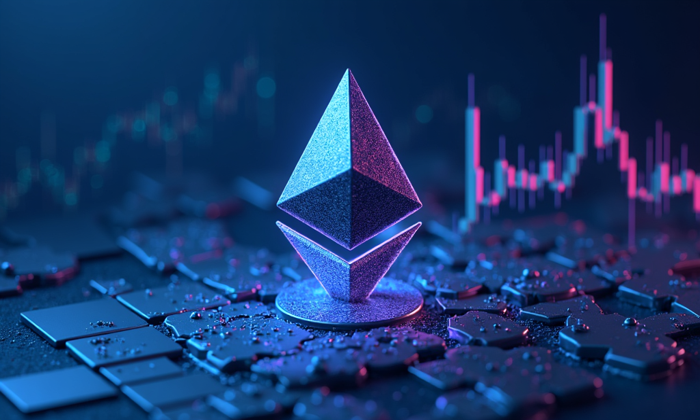OpenAI acquisition news is stirring excitement in the tech community as discussions have intensified over potential purchases, including a notable interest in Anysphere, the creator of the innovative Cursor AI coding assistant. With an ambitious goal of acquiring AI companies like WindSurf, OpenAI is maneuvering to enhance its offerings and solidify its position in the AI landscape. Reports indicate that the company could pay up to $3 billion for WindSurf, marking a significant investment that reflects OpenAI’s confidence in its strategic vision. Furthermore, the recent introduction of DeepSeek R1 has revolutionized expectations regarding AI capabilities, demonstrating that cutting-edge technology can be achieved at lower costs. As OpenAI aims to triple its revenue projections to around $12.7 billion by 2025, stakeholders are closely monitoring these developments for their impact on the future of artificial intelligence.
In the realm of artificial intelligence, the acquisition news surrounding OpenAI signals a pivotal shift as the organization actively seeks to expand its portfolio through strategic mergers and acquisitions. On the horizon is the potential integration of Anysphere and its Cursor AI coding assistant, which would be a game-changer in automating programming tasks. Simultaneously, interest in WindSurf indicates OpenAI’s desire to diversify its capabilities amid rapid advancements in the field, especially following the launch of competitive technologies like DeepSeek R1. As the tech landscape evolves, so do the revenue aspirations of major players, with OpenAI projecting a remarkable increase in earnings driven by innovative subscription services. This dynamic environment emphasizes the competitive nature of AI development and the need for companies to adapt swiftly to market changes.
OpenAI Acquisition News: The Pursuit of Anysphere and WindSurf
OpenAI’s venture into acquiring Anysphere, the creator of the Cursor AI coding assistant, has garnered significant interest within the AI community, especially as these discussions unfolded alongside potential negotiations with WindSurf. These acquisitions highlight a strategic shift for OpenAI, as they aim to enhance their capabilities in AI-assisted programming, an area with growing demand. Reports suggested that the initial approach to Anysphere occurred in 2024, followed by another attempt in 2025, yet negotiations did not materialize, leading OpenAI to seek alternatives.
The engagement with WindSurf, valued potentially at $3 billion, reflects the aggressive expansion strategy of OpenAI. The offer signifies a pivotal moment for the company, as it seeks to harness WindSurf’s innovation and technology stack to bolster its own offerings. Should this acquisition go through, it would not only elevate OpenAI’s position in the coding assistant space but could also influence the trajectory of AI development across industries. The competitive landscape is dynamic, with leading companies vying for dominance, making each acquisition move critical.
The Rise of AI Coding Assistants: Market Trends and Challenges
The landscape of AI coding assistants is evolving rapidly, driven by developments such as the Cursor AI and others emerging within the space. As companies increasingly automate coding with AI assistance, this sector has seen substantial investments. The rise of advanced coding tools exemplifies a market trend toward operational efficiency, allowing developers to harness AI for coding tasks, thus accelerating project timelines and minimizing errors. Innovations like those from Anysphere and WindSurf highlight the pivotal role of coding assistants in overall software development.
Despite the promising outlook, the market isn’t without its challenges. The increasing competition, especially from open-source solutions that boast reduced operational costs, puts pressure on established players like OpenAI. While proprietary AI models have traditionally dominated due to their extensive training and superior performance, emerging platforms demonstrate that affordability and scalability can coexist. This shift encourages a reevaluation of how AI coding assistants are developed and marketed, likely reshaping the industry’s future.
DeepSeek R1: Shaking Up AI Development Norms
DeepSeek R1’s introduction in January 2025 has disrupted the conventional wisdom surrounding AI development by proving that high-level performance can be achieved with significantly lower costs. This revelation is particularly crucial as the tech industry often operates under the assumption that extensive resources and capital are prerequisites for effective AI systems. The model’s capabilities challenge legacy perspectives and invite a broader rethinking of AI architecture and training methodologies.
As a result of DeepSeek’s emergence, the financial markets have responded with scrutiny, particularly regarding the massive investments made by traditional AI leaders. Companies that previously relied on scaling their AI solutions through increased financial input may need to pivot to more cost-effective strategies. This could potentially democratize AI technology, allowing smaller players and startups to innovate without prohibitive costs, thereby increasing competition and fostering diversity in the AI ecosystem.
OpenAI Revenue Projections: Aiming for Growth Amidst Challenges
OpenAI’s ambitious plans to triple its revenue to approximately $12.7 billion by 2025 hinge on the success of its subscription models for various AI solutions. This growth strategy capitalizes on the influx of over one million premium business subscribers by September 2024, signaling strong market interest in their products. However, despite these optimistic figures, CEO Sam Altman has cautioned that the path to profitability may not arrive until 2029, indicating significant financial hurdles ahead.
In promising a healthy return, OpenAI outlines that it requires about $125 billion in revenues to break even, a stark acknowledgment of the capital-intensive nature of AI development. As it navigates through high operational expenses and the competitive pressures from more agile, open-source alternatives, the billion-dollar question remains whether OpenAI can adapt swiftly enough to maintain its growth trajectory while also innovating to reduce costs.
The Impact of Open Source Alternatives on AI Development
The rise of open-source AI models poses a significant challenge to established players like OpenAI, particularly as new entrants, such as those utilizing DeepSeek’s technology, demonstrate that sustainable, high-performance AI can be developed without exorbitant funding. The growing support for communities developing open-source tools is now making them viable competitors in an industry plagued by rising costs and centralization fears. Dr. Ala Shaabana’s insights emphasize that operational expense reductions have led to a reevaluation of investment in AI solutions, pointing to an insightful shift in development paradigms.
As more organizations embrace open-source strategies, the traditional AI giants face pressure to not only innovate but also demonstrate the unique value propositions that proprietary solutions offer. The juxtaposition of high-cost corporate AI partnerships versus nimble, adaptable open-source projects could reshape the funding landscape, push prices down, and ultimately benefit end-users through increased quality and accessibility of AI technology.
The Future of AI Assistants: Trends and Opportunities
The future of AI coding assistants is bright, marked by rapid technological advancements and shifting market demands. The introduction of models like Cursor AI exemplifies how AI can significantly ease software development while optimizing productivity. As users increasingly look for tailored solutions, AI coding assistants will likely adapt to meet specific industry needs, bridging the gap between user expectations and technological capabilities.
Moreover, as OpenAI and its competitors innovate, new trends will emerge, such as enhanced user interfaces, improved understanding of natural language commands, and greater integration of AI assistants across various platforms. This evolution not only reflects consumer trends but also shapes how companies approach their software development strategies, potentially leading to more intuitive coding experiences and collaborative human-AI partnerships.
Investment Trends in AI: What Lies Ahead
Investment in AI technologies continues to soar, spurred by the pressing need for efficiency and automation across industries. As key players engage in high-stakes negotiations like OpenAI’s potential acquisition of WindSurf, we can anticipate an environment where mergers and acquisitions will become increasingly common to ensure competitive advantage. This investment wave is driven by the lucrative prospects that AI promises — from lowering operational costs to achieving significant advancements in performance.
However, with soaring investment comes the responsibility of ensuring sustainability and ethical considerations in AI development. Investors are not only looking for financial returns but also for initiatives that promote responsible AI use and compliance with regulatory standards. The fusion of profitability and ethics will likely dictate the future trajectory of AI investments, ensuring that the burgeoning sector grows in a way that benefits not only investors and companies but society at large.
Navigating the Competition: How OpenAI Plans to Stay Ahead
To stay competitive in the increasingly crowded AI landscape, OpenAI must continuously innovate while also navigating the challenges posed by more nimble, open-source alternatives. The company’s strategy focuses on leveraging cutting-edge technologies like DeepSeek R1 and integrating new acquisitions to enhance its portfolio. By actively pursuing partnerships and investments, OpenAI aims to position itself as a leader in not only coding assistance but the broader AI ecosystem.
However, this ambition hinges on OpenAI’s ability to adapt its business model to the changing market dynamics. As competition heats up from smaller players and innovative startups, OpenAI’s value proposition must resonate with both developers and businesses. Fostering a community around its products, ensuring the ease of integration and usage, and maintaining a robust support system will be essential to retaining existing customers while attracting new ones.
Towards a New Era of AI-Centric Business Solutions
The integration of AI into business processes signifies a transformative shift across various sectors. OpenAI and other enterprises are at the forefront of leveraging this technology, focusing on developing sophisticated AI-driven tools that streamline operations. Solutions like AI coding assistants not only improve efficiency but also empower businesses to harness data and insights in ways that were not possible before.
As the demand for these AI-centric solutions grows, the industry can expect a renaissance in innovation. Companies will likely invest in developing specialized tools tailored to unique industry needs, resulting in an ecosystem filled with diversity in offerings. This dynamic landscape promises to drive down costs and expand accessibility, reshaping the way businesses operate and interact with technology.
Frequently Asked Questions
What are the latest updates on the OpenAI acquisition of Anysphere and the AI coding assistant market?
OpenAI was in discussions to acquire Anysphere, the developer of the Cursor AI coding assistant, in 2024 and later in 2025, but negotiations fell through on both occasions. As a result, OpenAI has shifted its focus to other acquisition opportunities, including WindSurf, another competitor.
How does the Anysphere acquisition relate to OpenAI’s revenue projections?
OpenAI’s attempts to acquire Anysphere and enhance its AI offerings align with its ambitious revenue projections. The company expects to triple its revenue to around $12.7 billion by 2025, by leveraging paid subscriptions for its advanced AI models.
Why is the WindSurf acquisition significant for OpenAI’s growth?
OpenAI’s potential acquisition of WindSurf represents its largest acquisition attempt at $3 billion to date. This strategic move aims to bolster OpenAI’s capabilities in the competitive AI coding assistant landscape and enhance its revenue prospects.
What impact did DeepSeek R1 have on the AI industry and OpenAI’s acquisition strategy?
DeepSeek R1 has challenged traditional views on AI development costs, showing that high performance can be achieved with lower resources. This revelation has likely influenced OpenAI’s acquisition strategy by emphasizing the need for innovative technologies that can compete effectively against established models.
How are OpenAI’s revenue projections affected by competition in the AI market?
OpenAI anticipates significant revenue growth despite competition from agile open-source alternatives and other industry players. However, CEO Sam Altman noted that achieving profitability could take until 2029, given the capital-intensive nature of AI development necessitating $125 billion in revenues.
What are the long-term implications of open-source AI like DeepSeek for companies like OpenAI?
The rise of open-source AI systems like DeepSeek poses a challenge to centralized models from companies like OpenAI. These alternatives demonstrate lower operational costs and could disrupt the market by providing competitive performance without the need for massive financial investments.
What does OpenAI’s move towards acquiring AI coding assistants mean for the future of programming?
OpenAI’s acquisition interests, particularly in AI coding assistants like Anysphere, signal a commitment to enhancing productivity and efficiency in programming. This could lead to more accessible coding solutions, thereby transforming software development practices.
How has OpenAI responded to the financial requirements of its AI development amidst competitive pressures?
OpenAI is navigating high development costs while expanding its market reach through strategic acquisitions and subscription models. By exploring major investments like acquiring WindSurf, OpenAI aims to solidify its position in a rapidly evolving AI landscape.
| Key Point | Details |
|---|---|
| OpenAI Acquisition Discussions | OpenAI was reportedly in discussions to acquire Anysphere, the maker of Cursor AI coding assistant, but negotiations stalled. They then considered acquiring WindSurf as a potential opportunity. |
| Acquisition Amount for WindSurf | OpenAI is willing to pay $3 billion for WindSurf, which would mark its largest acquisition to date. |
| Revenue Predictions | OpenAI expects to triple its revenue to approximately $12.7 billion in 2025 by offering paid subscriptions. |
| Profitability Timeline | CEO Sam Altman indicated that OpenAI may not achieve profitability until 2029, requiring about $125 billion in revenues to become profitable. |
| Impact of DeepSeek R1 | The release of DeepSeek R1 in January 2025 challenged beliefs about AI costs, trained at lower costs yet performing comparably to leading models. |
| Open Source vs. Centralized AI | The launch of DeepSeek has reinforced open-source AI as a challenger against centralized AI systems, showcasing lower operational costs. |
Summary
OpenAI acquisition news reveals the company’s strategic moves in the AI landscape, particularly its effort to buy Anysphere and WindSurf. Despite setbacks in negotiations, OpenAI’s pursuit of innovative AI solutions continues. Moreover, the financial implications of AI development and the emerging competition from open-source models reflect a dynamic market. As OpenAI aims to triple its revenues, it emphasizes the evolving nature of AI technology and the new era it is entering.
OpenAI acquisition news has taken the tech world by storm as the organization seeks to ramp up its capabilities in artificial intelligence. Following their earlier attempts to purchase Anysphere, the creators of the innovative Cursor AI coding assistant, OpenAI is now negotiating with WindSurf in what could be its biggest acquisition to date. The stakes are high with a proposed $3 billion deal, indicating OpenAI’s commitment to enhancing its portfolio amid rising competition. This strategic move comes on the heels of new developments, such as DeepSeek R1, which challenge existing paradigms in AI technology and cost. As OpenAI braces for projected revenues of $12.7 billion by 2025, the acquisition of key players in the AI sector could pivot the company’s trajectory significantly towards profitability.
The recent rumors surrounding OpenAI’s acquisition efforts underscore a significant shift in the landscape of AI development. With a keen focus on enhancing its offerings, OpenAI is exploring potential partnerships with companies like Anysphere, known for its cutting-edge AI coding assistant, and WindSurf, a competitor that may offer complementary technologies. These negotiations are crucial as OpenAI aims to leverage innovations like the DeepSeek R1 model, which reshapes the understanding of AI performance efficiency. The competitive environment is intensifying as open-source alternatives emerge, prompting traditional corporate giants to reconsider their strategies in AI investment. As OpenAI navigates these challenges, the implications for both its market position and future revenue models remain paramount.














